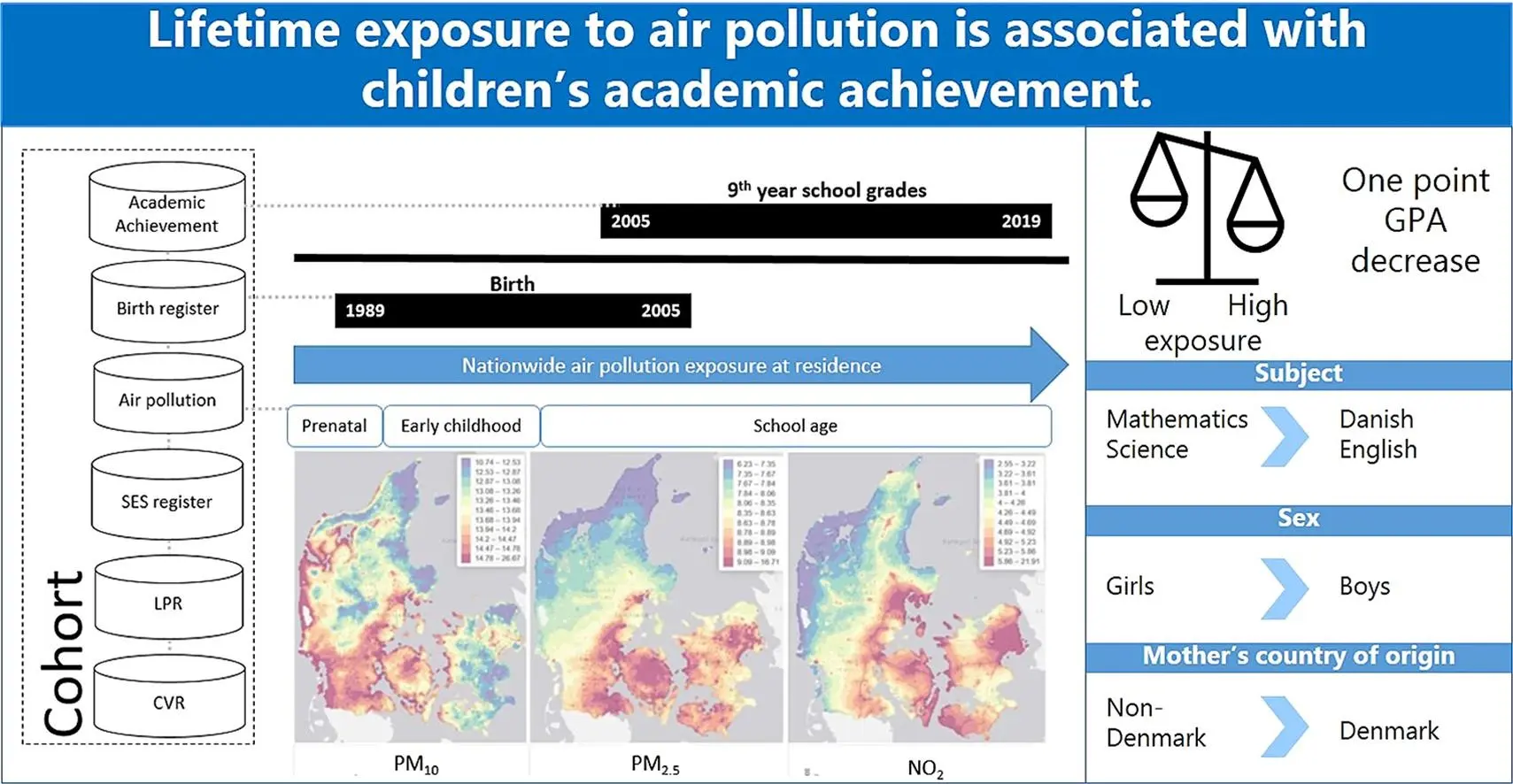Ikke umiddelbart, men de kontrollerer (cirka, der er lidt mere kød på deres metode-afsnit) for følgende:
We controlled for sex and school year in Model 1. We further adjusted for the individual’s characteristics: maternal age, country of origin, maternal education and income, and parity in Model 2. In the two models, we included a random intercept for each school to take into account the high correlation of GPA within a school (proportion of the random intercept variance: 10.0 %), and therefore, we did not further adjust for variables of the school characteristics in the model. We also examined subject-specific grades (Danish literature, Danish writing, English, mathematics, and natural sciences) associated with 16-year-long cumulative exposure to air pollution.
We identified susceptible populations to the adverse effects of 16-year-long cumulative exposure to air pollution on academic achievement by investigating effect modification by sex, mother’s country of origin (Danish vs. non-Danish mothers), small for gestational age (no vs. yes), parity (0 vs. 1+), maternal education (high vs. low), maternal income (low vs. high), maternal smoking during the pregnancy (never vs. ever), and population density (low vs. high)
Så de kigger på en masse ting. Bl.a. nogle ting man plejer at associere med ressourcestærke familier (høj/lav uddannelse hos moderen, moderens indkomst, osv). Men som @[email protected] også nævner: at "kontrollere" for noget er ikke nødvendigvis godt eller tilstrækkeligt. Nogle gange kan det faktisk give mening at udelade variable for at undgå bias

Hahaha, nej, jeg tror ikke det skal forstås koblet. Matematik over dansk, piger over drenge, og anden etnisk herkomst over etnisk herkomst. Her forstås "over" som, at det slår hårdere ud på den gruppe. Jeg tror ikke nødvendigvis at de grupper overlapper
Og hvis det var en joke: